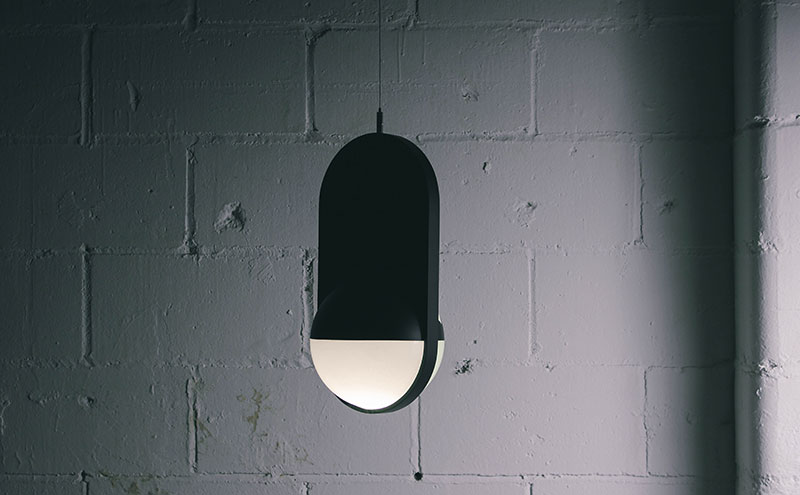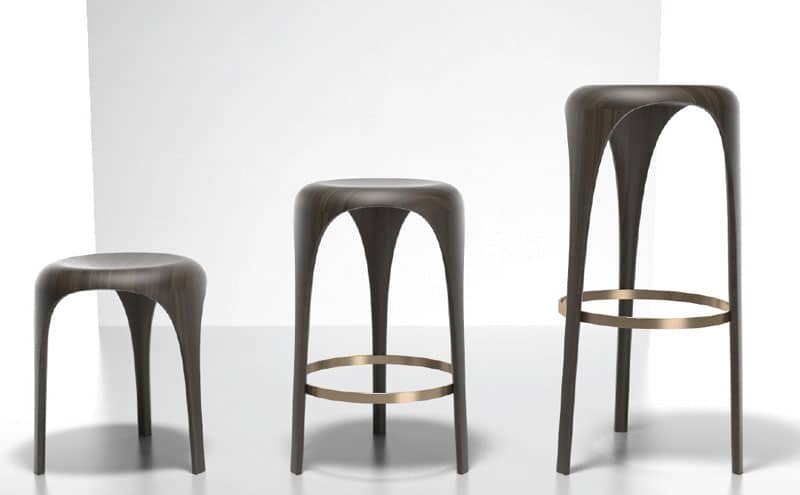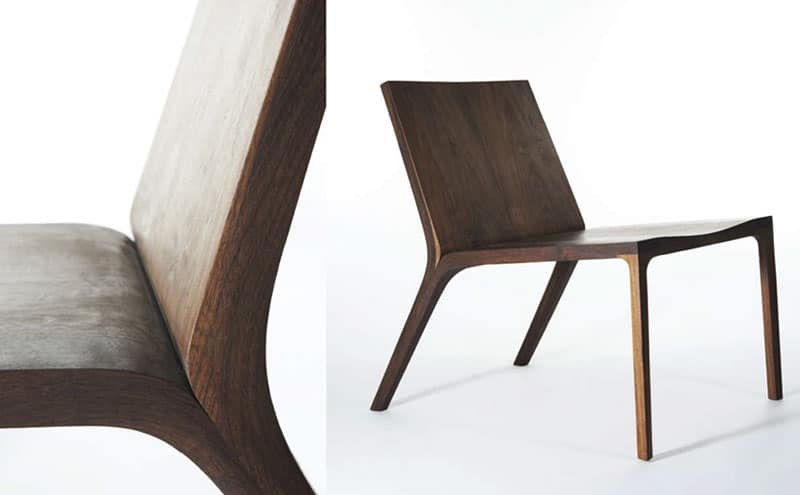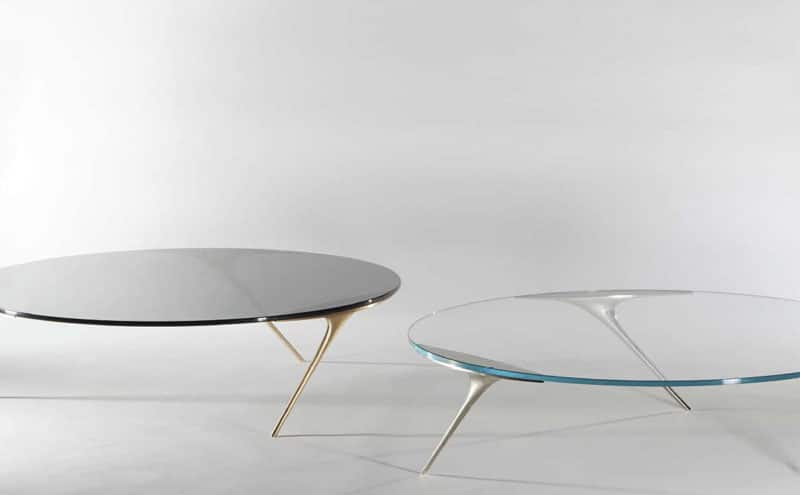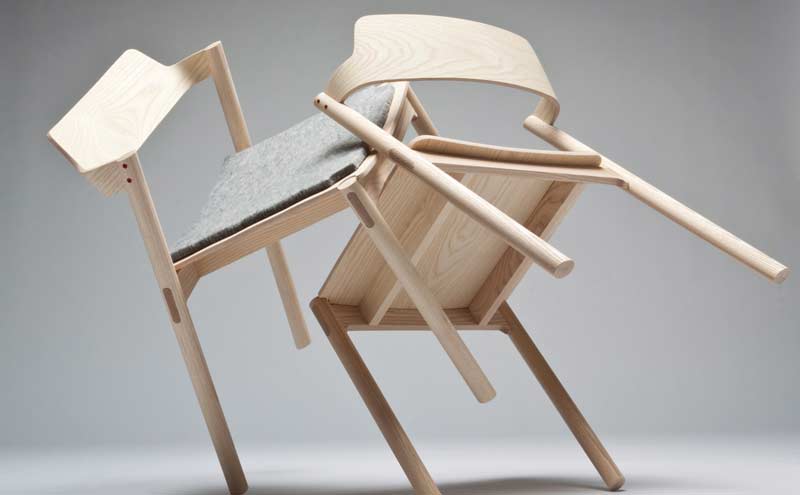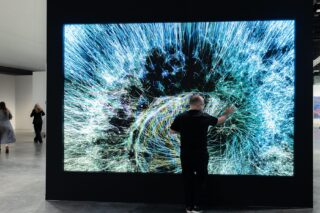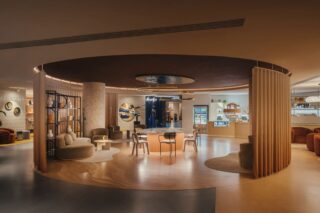One must-see exhibit at the International Contemporary Furniture Show this year was a series of stark white display booths decorated with orange signs where 11 young designers in the prestigious ICFF Studio program were displaying their products.
The star of the show was the quietly smiling Hui Ling Cheng, a design school student who was standing in front of two of her Tui walnut chairs—spare geometric forms that beautifully elucidate the yin and yang between a seat and its supports. Cheng had just picked up the ICFF Editor’s Award for Best Seating and people asking questions about her furniture were swarming her display.
ICFF Studio is an opportunity for emerging designers like Cheng to get hired by a major manufacturer or to potentially pick up a first commission. For the past decade, Bernhardt Design and Emerald Expositions have been hosting the juried competition that receives hundreds of submissions from around the globe. The entries, working prototypes not yet in commercial production, are judged on their aesthetics and commercial viability. Previous unknowns have in some cases become success stories overnight. ICFF Studio has been the launching pad for well-known designers such as Brad Ascalon, Chris Adamick and Nolen Niu.
ICFF Studio competition judge, Coleman Gutshall, who is director of strategic projects at Bernhardt Design, shared his observations about this year’s exhibition with ArchiExpo.
ArchiExpo e-mag: Do any designers here appear to be on the verge of selling their wares?
Coleman Gutshall: Hanna Kruse’s Tarvos kore collection is a series of really refined formal products that are almost art objects. She works with ash wood that that has been white washed and given surfaces like gold or burnished zinc. I understand that a collector from California has already purchased one and that a New York retailer is interested in carrying them. Also, there has been interest by lighting retailers and the architectural and design community in the lighting by Jordan Tomnuk. The retailers have also been by to talk toTamer Nakisci about his china patterns.
ArchiExpo e-mag: A lot of the work in this year’s studio is made from dark woods, and that clean simple lines dominate. Is there a shared design sensibility here?
Coleman Gutshall: I think part of it has to do with the return to wood and a sort of a reflection of where society and our design community is right now. So you have designers reinterpreting classical materials and classical ideas in creative ways. People also have been in the mode of simplifying in the last few years.
ArchiExpo e-mag: Are there any countries or schools that are particularly well represented here?
Coleman Gutshall: Obviously because it is North American based, the preponderance of them are from the United States. But Jordon Tomnuk is from Canada, Hanna Kruse is from Germany and Tamer Nakisci is from Istanbul.
In terms of schools we always end up getting a lot of good stuff out of the Art Center College of Design in Pasadena, California, and part of that is because they have had a very good history of partnering with industry. So a lot of times their products just end up meeting the criteria of products that are potentially ready for the marketplace. But it runs the gamut. We have had people from the Cranbrook Academy of Art, we have had people from Virginia Tech and there have been people from RISD [Rhode Island School of Design].
ArchiExpo e-mag: Is there anyone from Art Center College here this year?
Coleman Gutshall: There are actually two people who are Art Center students, Hui Ling Cheng, with the walnut chairs, and Funi Ding, who did these fabulous cocktail tables with the metal legs. And then there is Hines Fischer who did the walnut stools; he graduated a few years ago.
- Hines Fischer
- Hines Fischer
- Funi Ding
- Funi Ding
- Jonah Willcox
ArchiExpo e-mag: If they didn’t have ICFF Studio as a platform, what other opportunities would there be for these students to display their work?
Coleman Gutshall: Even today in North America there are very few opportunities for students to showcase their work. There are some student competitions, but there is not the institutional support that you get in some of the European countries. For example, there is the Finnish design council and then there is the Norwegian government, which subsidizes 100% Norway and ships it all over the world. So young designers in a lot of European countries have things that we still don’t have.
ArchiExpo e-mag: What makes ICFF Studio unique?
Coleman Gutshall: When ICFF studio started 10 years ago there really wasn’t anything like it. I think that we are really sort of unique in that we are tightly curated in a sort of gallery space and we really focus on specific products. So it is really about the type of product on display and giving young designers a space where they can express themselves.


